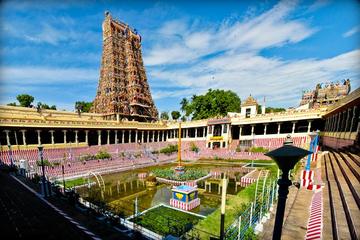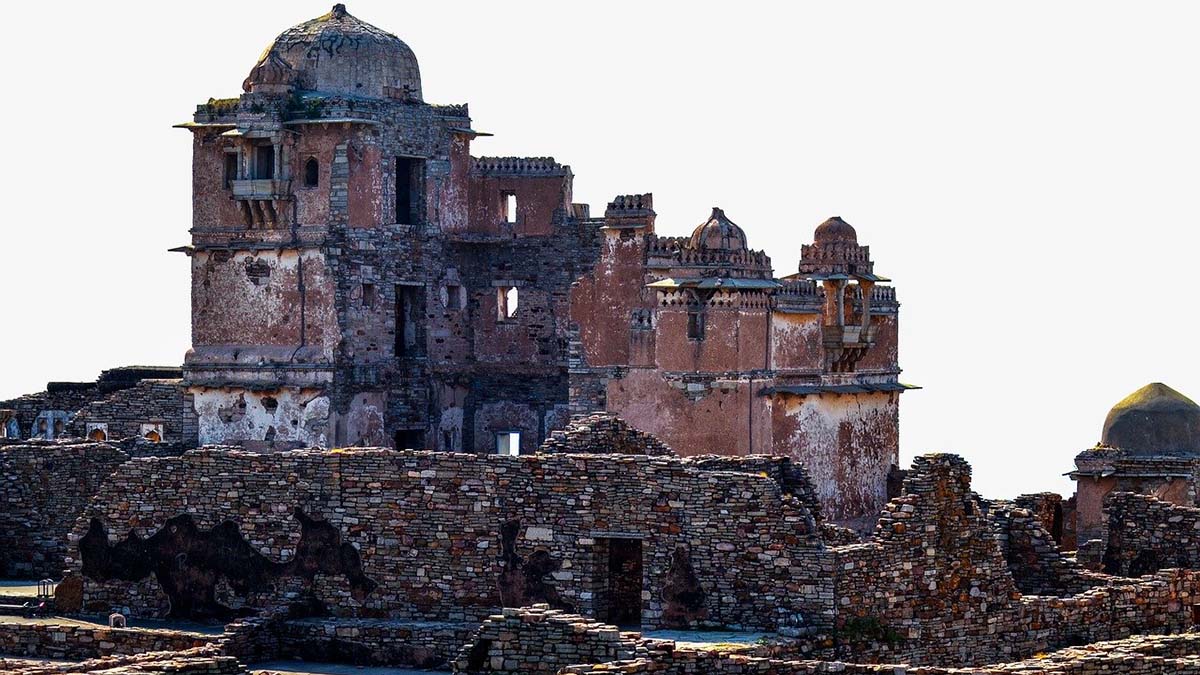
Rajasthan, India
by Anuradha Shankar
 We stand at the edge of a huge clearing. At one end is a temple, an ancient one, built centuries ago, broken but re-built time and again. All around us are fragments of carved stones. They once adorned temples built around the clearing, and are now waiting to be replaced and returned to at least a shadow of their former glory. The clearing itself is not empty. There are remnants of a huge platform, and some smaller ones. Each one had a role to play in history – a history I have grown up hearing, which has brought me all this way. The story is stuff that legends are made of, and I wanted to see for myself what it felt like to stand at a place where thousands and thousands of women had sacrificed their lives, and the lives of their families, for their honour, and for the honour of their clan. As I stand there, oblivious to the tourists who throng the place, I can’t help but feel the devastation and the sadness that lingers on, centuries after the events have taken place. We are at Chittorgarh, also called Chittaur, in Rajasthan, one of the oldest and biggest forts in India. It was once the bastion of the Mewar Rajputs and was ruled by various kings famed for their courage, but more than them, it is the story of their women that dwells in people’s hearts even today. Not just one woman, but many. There are some whose names we know, and many whose we don’t, but each one of them attained immortality in the hearts and minds of Indians. This is the story of some of these women.
We stand at the edge of a huge clearing. At one end is a temple, an ancient one, built centuries ago, broken but re-built time and again. All around us are fragments of carved stones. They once adorned temples built around the clearing, and are now waiting to be replaced and returned to at least a shadow of their former glory. The clearing itself is not empty. There are remnants of a huge platform, and some smaller ones. Each one had a role to play in history – a history I have grown up hearing, which has brought me all this way. The story is stuff that legends are made of, and I wanted to see for myself what it felt like to stand at a place where thousands and thousands of women had sacrificed their lives, and the lives of their families, for their honour, and for the honour of their clan. As I stand there, oblivious to the tourists who throng the place, I can’t help but feel the devastation and the sadness that lingers on, centuries after the events have taken place. We are at Chittorgarh, also called Chittaur, in Rajasthan, one of the oldest and biggest forts in India. It was once the bastion of the Mewar Rajputs and was ruled by various kings famed for their courage, but more than them, it is the story of their women that dwells in people’s hearts even today. Not just one woman, but many. There are some whose names we know, and many whose we don’t, but each one of them attained immortality in the hearts and minds of Indians. This is the story of some of these women.
The Incomparable Queen
 Padmini was the queen of Rana Ratan Singh, who ruled Chittaur around 1303 AD. She was rumored to be among the most beautiful women in the world. The rumor reached the ears of Sultan Allaudin Khilji, who then ruled Delhi. He attacked Chittaur at once, hoping to add Padmini to his harem. Chittaur however was invincible, and Khilji found himself at the losing end, so he resorted to trickery. He convinced Ratan Singh that all he wanted was a glimpse of the beautiful queen, and that he would leave immediately. The kindhearted Rana agreed, and an ingenious system of mirrors was designed so that Khilji could see Padmini’s reflection in a mirror without setting his eyes on her directly. (The Rajput women were never allowed to be seen by men!) Khilji had no intention of leaving empty handed. He captured the Rana who, with true Rajput hospitality, had gone to the fort entrance to send him off. The queen however, wasn’t just beautiful. She also had brains. She agreed to go to the Sultan, but instead sent her guards in disguise, who succeeded in releasing the Rana. However, by now, the Sultan’s army was at the gates of Chittaur, and defeat was imminent.
Padmini was the queen of Rana Ratan Singh, who ruled Chittaur around 1303 AD. She was rumored to be among the most beautiful women in the world. The rumor reached the ears of Sultan Allaudin Khilji, who then ruled Delhi. He attacked Chittaur at once, hoping to add Padmini to his harem. Chittaur however was invincible, and Khilji found himself at the losing end, so he resorted to trickery. He convinced Ratan Singh that all he wanted was a glimpse of the beautiful queen, and that he would leave immediately. The kindhearted Rana agreed, and an ingenious system of mirrors was designed so that Khilji could see Padmini’s reflection in a mirror without setting his eyes on her directly. (The Rajput women were never allowed to be seen by men!) Khilji had no intention of leaving empty handed. He captured the Rana who, with true Rajput hospitality, had gone to the fort entrance to send him off. The queen however, wasn’t just beautiful. She also had brains. She agreed to go to the Sultan, but instead sent her guards in disguise, who succeeded in releasing the Rana. However, by now, the Sultan’s army was at the gates of Chittaur, and defeat was imminent.
Even as the men prepared for one last stand against the invaders, the women and children prepared for their own last stand – they decided to immolate themselves rather than fall into the hands of the Sultan’s men who were sure to defile them. So it was that the queen led all her women and their families to a funeral pyre lit on a platform in the huge clearing. Each one jumped in, and thus was recorded the first ‘jauhar’ of Chittaur. With their families dead, and nothing more to lose, the men of Chittaur embarked on a suicide mission- called the saka – to fight to their last breath. This they did with valour unheard of, and when at last, the troops of the Sultan entered the fort, all they found was masses and masses of ash! It is said that Khilji was so angry, that he almost completely razed the fort.
Thus ended the story of Padmini, the queen forever associated with the fort of Chittaur, but there were other women to come after her, and leave their names on the pages of Chittaur’s history.
The Poetess-Saint
 Amidst stories of war and death is another story – that of a young girl who came to Chittaur in the 1500s as a bride. She was married to the prince, but refused to accept him as her husband. She was mentally wed to Lord Krishna and her life was dedicated to Him. She spent her time singing songs in praise of the Lord, and talked to Him as if He was present in flesh and blood. This was Meera – the poetess-saint, whose songs on Krishna are sung across the country even today. Her attitude was never appreciated, and after her husband was killed in war, the situation only worsened. She was continually troubled and insulted, until at last, she decided to leave Chittaur and go to the land of her Lord – Mathura and Brindavan. With the departure of Meera, Chittaur seemed to lose its greatness. The locals till today believe that it was Chittaur’s treatment of Meera that instigated the ultimate defeat and destruction of the once-invincible fort!
Amidst stories of war and death is another story – that of a young girl who came to Chittaur in the 1500s as a bride. She was married to the prince, but refused to accept him as her husband. She was mentally wed to Lord Krishna and her life was dedicated to Him. She spent her time singing songs in praise of the Lord, and talked to Him as if He was present in flesh and blood. This was Meera – the poetess-saint, whose songs on Krishna are sung across the country even today. Her attitude was never appreciated, and after her husband was killed in war, the situation only worsened. She was continually troubled and insulted, until at last, she decided to leave Chittaur and go to the land of her Lord – Mathura and Brindavan. With the departure of Meera, Chittaur seemed to lose its greatness. The locals till today believe that it was Chittaur’s treatment of Meera that instigated the ultimate defeat and destruction of the once-invincible fort!
The Second Jauhar
 Years passed, and once again Chittaur was invaded – this time by the Shah of Gujarat, in 1535. The Rajputs were not strong enough, and Queen Karnavati this time decided to take matters into her own hands. She sent an emissary to Humayun, the new Mughal ruler of Delhi, with a fragment of her sari as a ‘Rakhi’ – a thread tied by a woman to her brother, which binds them together. When a woman ties a Rakhi to her brother, he promises to protect her, and it was this protection that Rani Karnavati asked for, from Humayun. Most of Humayun’s supporters were against his going to help a Rajput on the grounds of religion. It took Humayun some time to convince them, but he marched towards Chittaur to help the queen. However, the argument had delayed him by just a day. Sensing defeat at the hands of the enemy and disappointed at the lack of response from Delhi, the queen had taken the path of her ancestor. The funeral pyre had been lit again in the huge clearing near the temple, and the queen had entered it along with all her women. Humayun was too late to save them, and it is said that he felt deeply for not being able to protect his sister. It is said that he continued to wage war against the Shah, and eventually succeeded in defeating him.
Years passed, and once again Chittaur was invaded – this time by the Shah of Gujarat, in 1535. The Rajputs were not strong enough, and Queen Karnavati this time decided to take matters into her own hands. She sent an emissary to Humayun, the new Mughal ruler of Delhi, with a fragment of her sari as a ‘Rakhi’ – a thread tied by a woman to her brother, which binds them together. When a woman ties a Rakhi to her brother, he promises to protect her, and it was this protection that Rani Karnavati asked for, from Humayun. Most of Humayun’s supporters were against his going to help a Rajput on the grounds of religion. It took Humayun some time to convince them, but he marched towards Chittaur to help the queen. However, the argument had delayed him by just a day. Sensing defeat at the hands of the enemy and disappointed at the lack of response from Delhi, the queen had taken the path of her ancestor. The funeral pyre had been lit again in the huge clearing near the temple, and the queen had entered it along with all her women. Humayun was too late to save them, and it is said that he felt deeply for not being able to protect his sister. It is said that he continued to wage war against the Shah, and eventually succeeded in defeating him.
The Ultimate Sacrifice
 The Rajputs were now dwindling. There were just a few who had escaped the wars, and none had the stature and power of their ancestors. Petty jealousies and greed ruled many of the scions of the dynasty. One such scion was Banbir, who killed his brother in order to become the king. Drunk with power, he attempted to kill the crown prince Udai Singh, then an infant. News travels fast, but bad news faster, and the prince’s nurse heard of the impending calamity. A quick thinking and courageous woman, she bundled the prince into a basket of flowers, handed it to a maid and asked her to carry it out of the fort. She then placed her own son dressed in the prince’s clothes on the royal bed, and waited for the traitor. Intent on saving the prince, she watched as her son was killed, cremated him, and then walked out of the fort, taking the prince to safety. History tells us that her name was Panna Dai (Dai means nursemaid), but that is all we know of the woman who gave up her own son to protect the prince.
The Rajputs were now dwindling. There were just a few who had escaped the wars, and none had the stature and power of their ancestors. Petty jealousies and greed ruled many of the scions of the dynasty. One such scion was Banbir, who killed his brother in order to become the king. Drunk with power, he attempted to kill the crown prince Udai Singh, then an infant. News travels fast, but bad news faster, and the prince’s nurse heard of the impending calamity. A quick thinking and courageous woman, she bundled the prince into a basket of flowers, handed it to a maid and asked her to carry it out of the fort. She then placed her own son dressed in the prince’s clothes on the royal bed, and waited for the traitor. Intent on saving the prince, she watched as her son was killed, cremated him, and then walked out of the fort, taking the prince to safety. History tells us that her name was Panna Dai (Dai means nursemaid), but that is all we know of the woman who gave up her own son to protect the prince.
And a Third Time!
 Chittaur’s fortunes were declining. The year was 1567 and this time, it was Akbar, Humayun’s son, who invaded Chittaur, in an attempt to bring the land of Mewar under his rule. By this time, it was apparent to all that the fort was no longer invincible, and it was time to move. This time, the prince was convinced to escape and find another place to establish his kingdom, while the rest of the army turned once again towards the last resort – Jauhar and saka. Once again, (thankfully, for the last time), the women ascended the pyre and the men fought with a vengeance, earning the reluctant admiration of Akbar himself. Akbar won the fort, but never ruled it. He took back with him some of the most beautiful things in the fort – its door, a huge drum, and such other things – as mementos of the war, but he never ruled over the fort, which was soon abandoned, and slipped into the misty realm of history.
Chittaur’s fortunes were declining. The year was 1567 and this time, it was Akbar, Humayun’s son, who invaded Chittaur, in an attempt to bring the land of Mewar under his rule. By this time, it was apparent to all that the fort was no longer invincible, and it was time to move. This time, the prince was convinced to escape and find another place to establish his kingdom, while the rest of the army turned once again towards the last resort – Jauhar and saka. Once again, (thankfully, for the last time), the women ascended the pyre and the men fought with a vengeance, earning the reluctant admiration of Akbar himself. Akbar won the fort, but never ruled it. He took back with him some of the most beautiful things in the fort – its door, a huge drum, and such other things – as mementos of the war, but he never ruled over the fort, which was soon abandoned, and slipped into the misty realm of history.
 The stories are not new to me. I have grown up with them. But standing at the edge of that clearing seems to make them seem more real. On one side is the temple dedicated to the Lord of destruction – Shiva – undoubtedly a fit location for such a temple. On the other side, a little farther away, I can see the spire of the temple of Krishna – the protector – where Meera spent her days in prayer. I can almost imagine the massive funeral pyre and the tongues of flames eagerly lapping up the human sacrifice, of cries rending the air, and the complete stillness at the end, the ground covered in ashes. I can’t help wondering about these women – women who had jumped into the fire, who had been ready to give up everything for what they believed, who sacrificed not just themselves, but their nearest and dearest ones, for the cause they believed in. What kind of women were these? Was it bravery or escapism of the extreme kind? What would have been their thoughts? Ballads have been written about these women, but I know that I will never know the answers to my questions. As we move towards the other parts of the fort, I turn back one last time, for one last look, committing every inch to memory. The women surely deserve that.
The stories are not new to me. I have grown up with them. But standing at the edge of that clearing seems to make them seem more real. On one side is the temple dedicated to the Lord of destruction – Shiva – undoubtedly a fit location for such a temple. On the other side, a little farther away, I can see the spire of the temple of Krishna – the protector – where Meera spent her days in prayer. I can almost imagine the massive funeral pyre and the tongues of flames eagerly lapping up the human sacrifice, of cries rending the air, and the complete stillness at the end, the ground covered in ashes. I can’t help wondering about these women – women who had jumped into the fire, who had been ready to give up everything for what they believed, who sacrificed not just themselves, but their nearest and dearest ones, for the cause they believed in. What kind of women were these? Was it bravery or escapism of the extreme kind? What would have been their thoughts? Ballads have been written about these women, but I know that I will never know the answers to my questions. As we move towards the other parts of the fort, I turn back one last time, for one last look, committing every inch to memory. The women surely deserve that.
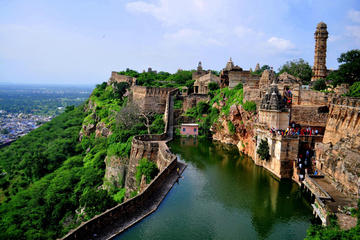
Private Day Trip to Fort Chittorgarh and Castle Bijaipur from Udaipur
If You Go:
Nearest Airport : Maharana Prarap Airport, Udaipur – 90 kilomteres
Nearest Railway Station: Chittaurgarh, connected to Delhi and Jaipur
Distances: Chittorgarh is 113 kilomteres from Udaipur, 372 Km from Jaipur and 182 Km from Ajmer.
The best way to visit Chittorgarh is by day trip from Udaipur. The journey takes about two hours each way, and it is possible to cover the fort in a few hours. There isn’t much else to see except the fort, so staying over is not necessary, though there are plenty of hotels around. Vehicles are allowed inside the fort, so all you have to do is take a ticket and drive around. Make sure to take a complete round of the fort apart from just the usual ruins which are part of the tourist circuit. It takes less than an hour, but it gets you away from the crowd, and is worth every minute!
About the author:
A home maker and budding travel writer, Anuradha lives in India and loves to travel with her family. Taking every opportunity to explore known and unknown destinations, she writes about her travels on her blog, A Wandering Mind. Her greatest desire is to visit every corner of her beautiful country.
Photo credits:
Rana Ratan Palace at top by: Digant Dalal from Pixabay
All other photos are by Anuradha Shankar.


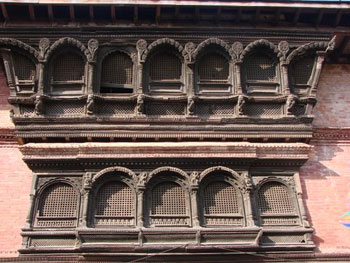 There are three Durbar Squares in Kathmandu valley named Hanumandhoka, Patan & Bhaktapur. A Durbar Square is a settlement with the King’s palace at its centre, surrounded by the temples dedicated to deities of the clan. This used to be the centre of the town and around this everyone else would live. As you see the squares today, you would see how these squares had the beautiful buildings with spaces for people to sit around and how these squares more or less merged with the rest of the town. Even today these squares are very much living spaces and you would see local people sitting on the steps of the temples and on the corridors outside the buildings. There is no formal boundary between the durbar squares and the residential areas. In fact there are no tickets for the locals to visit these places only the foreigners have to pay an entrance fees for all the three durbar squares. Some parts have now been converted into commercial establishments like shops and restaurants. Some of the palaces or their parts have been converted into museums. With Pagoda style architecture all of them are beautiful in their own way, while being very similar to each other. Most of the buildings are in red brick with intricately carved wooden windows, which are the trademark of Nepal.
There are three Durbar Squares in Kathmandu valley named Hanumandhoka, Patan & Bhaktapur. A Durbar Square is a settlement with the King’s palace at its centre, surrounded by the temples dedicated to deities of the clan. This used to be the centre of the town and around this everyone else would live. As you see the squares today, you would see how these squares had the beautiful buildings with spaces for people to sit around and how these squares more or less merged with the rest of the town. Even today these squares are very much living spaces and you would see local people sitting on the steps of the temples and on the corridors outside the buildings. There is no formal boundary between the durbar squares and the residential areas. In fact there are no tickets for the locals to visit these places only the foreigners have to pay an entrance fees for all the three durbar squares. Some parts have now been converted into commercial establishments like shops and restaurants. Some of the palaces or their parts have been converted into museums. With Pagoda style architecture all of them are beautiful in their own way, while being very similar to each other. Most of the buildings are in red brick with intricately carved wooden windows, which are the trademark of Nepal.
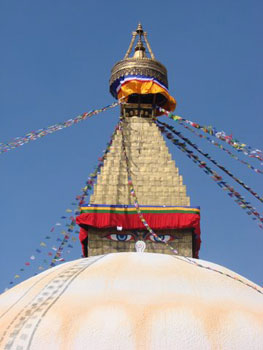 Bhaktapur is an old town and is considered the cultural capital of the region. This square actually has three squares. You see the first one as you enter from the main gate called the Durbar Square. Past this is Taumadhi Square, which has the magnificent five-storied Nyatapola temple dedicated to Siddhi Laxmi along with a three-storey Bhairav temple. The steps leading to the temple have huge figurines of animals on both sides. From the top story of the temple you can get a bird’s eye view of the town. Behind this square is a potter’s square where you will see rows of pottery lying in a square and potter’s wheels around it.
Bhaktapur is an old town and is considered the cultural capital of the region. This square actually has three squares. You see the first one as you enter from the main gate called the Durbar Square. Past this is Taumadhi Square, which has the magnificent five-storied Nyatapola temple dedicated to Siddhi Laxmi along with a three-storey Bhairav temple. The steps leading to the temple have huge figurines of animals on both sides. From the top story of the temple you can get a bird’s eye view of the town. Behind this square is a potter’s square where you will see rows of pottery lying in a square and potter’s wheels around it. Swayambhunath is located on a small hilltop inside the city. There is a large stupa surrounded by many temples and lots of Mandalas spread all over the complex. The stupa dates back to 5th century with an interesting story of a lotus being converted into this hill. Apart from the magnificent stupa with intriguing eyes painted on it, you can get an excellent view of the Kathmandu city from this high vantage point.
Swayambhunath is located on a small hilltop inside the city. There is a large stupa surrounded by many temples and lots of Mandalas spread all over the complex. The stupa dates back to 5th century with an interesting story of a lotus being converted into this hill. Apart from the magnificent stupa with intriguing eyes painted on it, you can get an excellent view of the Kathmandu city from this high vantage point.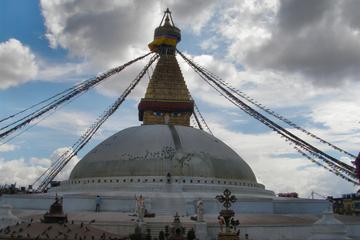

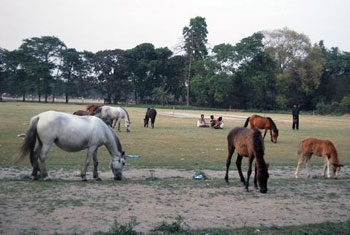 Kolkata is best seen from the footpath. A walk around these streets is a constant zigzag from the denoted path back onto the street to avoid the myriad obstacles of shopkeeper’s and vendors who occupy almost every square inch. The footpaths can be landmines filled with unstable bricks and others simply dug up with no discernable pattern, despite all this around every corner is the time honoured tradition of boys playing cricket. Street children, millions of homeless, goats, cows and other assorted stray animals all fill the footpaths in hopes of finding a new life. With so many people jostling for space it is hard to imagine how these people live and survive. However one of Kolkata’s reputations is correct, it is a shock to the senses. Fittingly it has long been described by many as a “Gateway to the East.” Nothing it seems could be further from our daily routine.
Kolkata is best seen from the footpath. A walk around these streets is a constant zigzag from the denoted path back onto the street to avoid the myriad obstacles of shopkeeper’s and vendors who occupy almost every square inch. The footpaths can be landmines filled with unstable bricks and others simply dug up with no discernable pattern, despite all this around every corner is the time honoured tradition of boys playing cricket. Street children, millions of homeless, goats, cows and other assorted stray animals all fill the footpaths in hopes of finding a new life. With so many people jostling for space it is hard to imagine how these people live and survive. However one of Kolkata’s reputations is correct, it is a shock to the senses. Fittingly it has long been described by many as a “Gateway to the East.” Nothing it seems could be further from our daily routine.
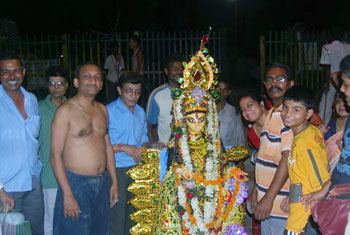 We get off from the beautifully tiled Metro platform and see one of ubiquitous scales that are located at train and metro stations across India. These scales are run by various companies around the country and could remind one of an old style jukebox. The customer steps up onto the scale and for the price of two rupees is treated some snapping neon Christmas-like lights with a bit of music and finally a piece of paper with your weight and a horoscope emerges. Sometimes in place of a horoscope advice is given directly from a Bollywood star! I vowed to use one on our return trip.
We get off from the beautifully tiled Metro platform and see one of ubiquitous scales that are located at train and metro stations across India. These scales are run by various companies around the country and could remind one of an old style jukebox. The customer steps up onto the scale and for the price of two rupees is treated some snapping neon Christmas-like lights with a bit of music and finally a piece of paper with your weight and a horoscope emerges. Sometimes in place of a horoscope advice is given directly from a Bollywood star! I vowed to use one on our return trip. We passed arrays of food vendors, shops selling all types of wooden furniture and famous Bengali sweet shops. Finding a jeweler was proving to be harder than we thought. We wandered some more and turned around and tried to find street signs, which isn’t the easiest task anywhere in India. We asked for directions which resulted in us getting more turned around. This is where India can be its most infuriating, its at these moment where the tropical heat and horns blaring and the roundabout footpaths can make you question your sanity. We finally found a street that was studded jewellers and darted into one.
We passed arrays of food vendors, shops selling all types of wooden furniture and famous Bengali sweet shops. Finding a jeweler was proving to be harder than we thought. We wandered some more and turned around and tried to find street signs, which isn’t the easiest task anywhere in India. We asked for directions which resulted in us getting more turned around. This is where India can be its most infuriating, its at these moment where the tropical heat and horns blaring and the roundabout footpaths can make you question your sanity. We finally found a street that was studded jewellers and darted into one. The shop wasn’t your typical jeweller but more like a junk/trinket store. The shop was owned by a vivacious Bengali man and his son. It looked like it had been there during the days of the original banyan tree. Instead of pulling out any particular rings the owner pulled up several big red boxes while the son turned around and grabbed a silver tray filled with miscellaneous junk. It took several attempts to make ourselves understood about what exactly we wanted done.
The shop wasn’t your typical jeweller but more like a junk/trinket store. The shop was owned by a vivacious Bengali man and his son. It looked like it had been there during the days of the original banyan tree. Instead of pulling out any particular rings the owner pulled up several big red boxes while the son turned around and grabbed a silver tray filled with miscellaneous junk. It took several attempts to make ourselves understood about what exactly we wanted done. He seemed to warm to us and expressed gratefulness to be able practice his English, which wasn’t as bad as we originally thought. Along with being a shop keeper he seemed a very well cultured man and regaled with quotes about his heroes and favourite music.
He seemed to warm to us and expressed gratefulness to be able practice his English, which wasn’t as bad as we originally thought. Along with being a shop keeper he seemed a very well cultured man and regaled with quotes about his heroes and favourite music.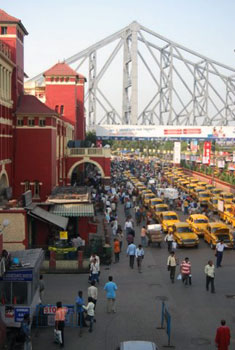 We begged him to sing us a song, a real Bengali song. He refused. We begged more, we asked him how a beautiful man with a beautiful voice could not sing us such a song for our wedding.
We begged him to sing us a song, a real Bengali song. He refused. We begged more, we asked him how a beautiful man with a beautiful voice could not sing us such a song for our wedding.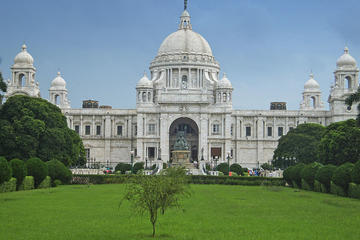
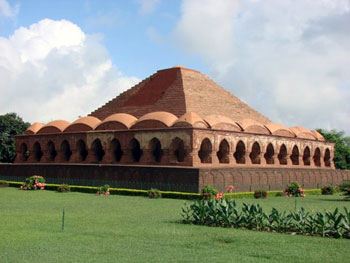
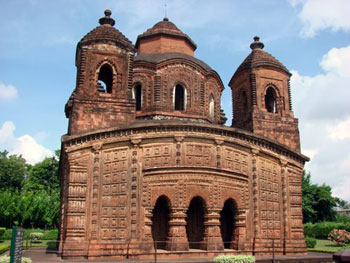 This region was ruled by the Malla dynasty from 8th CE to 19th CE, more than 1000 years and 55 generations. Now there are not many dynasties that have ruled for that long. The origin of the dynasty though lies outside Bengal, in distant Rajasthan from where the first king landed here and sowed the seeds for this dynasty. The dynasty was Shaivaite i.e the worshippers of Shiva, one of the Gods in famous Indian Trinity of Brahma, Vishnu, Mahesh aka Shiva. During the early 17th century, kingdom was under king Bir Hambir. He converted to Vaishanava sect and became a devotee of Vishnu. Ram and Krishna are two popular incarnations of Vishnu. He started building temples for his new faith. Most of the temples are dedicated to Krishna and his beloved Radha. Temples are names after various names of these deities. The terracotta was chosen as the base material for the temple, as there is no native stone in this region, so they had to depend on the clay that is amply available. Unfortunately the life of Terracotta is 300-400 years and you can see the corrosion that has already started happening in the temple tiles.
This region was ruled by the Malla dynasty from 8th CE to 19th CE, more than 1000 years and 55 generations. Now there are not many dynasties that have ruled for that long. The origin of the dynasty though lies outside Bengal, in distant Rajasthan from where the first king landed here and sowed the seeds for this dynasty. The dynasty was Shaivaite i.e the worshippers of Shiva, one of the Gods in famous Indian Trinity of Brahma, Vishnu, Mahesh aka Shiva. During the early 17th century, kingdom was under king Bir Hambir. He converted to Vaishanava sect and became a devotee of Vishnu. Ram and Krishna are two popular incarnations of Vishnu. He started building temples for his new faith. Most of the temples are dedicated to Krishna and his beloved Radha. Temples are names after various names of these deities. The terracotta was chosen as the base material for the temple, as there is no native stone in this region, so they had to depend on the clay that is amply available. Unfortunately the life of Terracotta is 300-400 years and you can see the corrosion that has already started happening in the temple tiles.
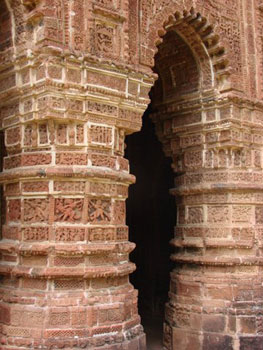 Rasamancha is a unique structure in Bishnupur, again built by Bir Hambir in 1600 CE. It is a pyramid like structure on a huge square platform. The circumambulate corridors have huge arches with lotus motifs, that create a labyrinth like way to the central point, where probably a deity was worshipped. It is a place that was used for a local festival called Rasa festival. During this festival all the images from temples of neighboring villages were brought here and displayed in these galleries for the public. The festival still continues to be celebrated here but probably in a more contemporary way. It is said that it is one of its kind structure in the world and no parallel or a similar structure has been found anywhere.
Rasamancha is a unique structure in Bishnupur, again built by Bir Hambir in 1600 CE. It is a pyramid like structure on a huge square platform. The circumambulate corridors have huge arches with lotus motifs, that create a labyrinth like way to the central point, where probably a deity was worshipped. It is a place that was used for a local festival called Rasa festival. During this festival all the images from temples of neighboring villages were brought here and displayed in these galleries for the public. The festival still continues to be celebrated here but probably in a more contemporary way. It is said that it is one of its kind structure in the world and no parallel or a similar structure has been found anywhere. Artisans of Bishnupur and around excel in the metal craft. They make various items of decorative as well as everyday use in brass. The art form resembles the tribal art from other tribal regions of India. The artists still make the metal ware with the lost wax method, which is the oldest known way of making metal ware. Look for conch shell bangles that are hand carved in tiny shops on both sides of narrow lanes along with the carved conch shells that look beautiful. You can also shop for the Ganjifa cards that are the origin of modern day playing cards and are now hand made by only one family here, the Fauzdar family. If you get a chance, indulge yourself in the classical music that belongs to the gharana or tradition of this town.
Artisans of Bishnupur and around excel in the metal craft. They make various items of decorative as well as everyday use in brass. The art form resembles the tribal art from other tribal regions of India. The artists still make the metal ware with the lost wax method, which is the oldest known way of making metal ware. Look for conch shell bangles that are hand carved in tiny shops on both sides of narrow lanes along with the carved conch shells that look beautiful. You can also shop for the Ganjifa cards that are the origin of modern day playing cards and are now hand made by only one family here, the Fauzdar family. If you get a chance, indulge yourself in the classical music that belongs to the gharana or tradition of this town.
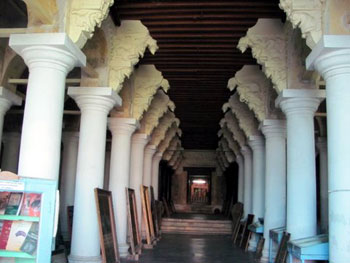
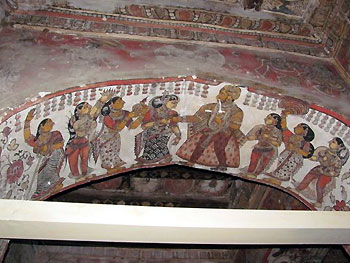 The palace gates opened into extensive grounds with the remains of a once beautiful fountain straight ahead. Beyond this was ‘Ramalinga Vilasam’, the grand abode of the Sethupathy Kings who ruled almost one fifth of Tamil Nadu, South India from 1601 to 1948 AD. A temple built by the Kings of this empire in honor of their family deities can be seen on the southern side and still functions as a place of worship. Ascending several stone steps, I entered the royal dwelling. A small section on the right has been converted into a ticket counter and paying a small fee, I commenced a tour of this fort.
The palace gates opened into extensive grounds with the remains of a once beautiful fountain straight ahead. Beyond this was ‘Ramalinga Vilasam’, the grand abode of the Sethupathy Kings who ruled almost one fifth of Tamil Nadu, South India from 1601 to 1948 AD. A temple built by the Kings of this empire in honor of their family deities can be seen on the southern side and still functions as a place of worship. Ascending several stone steps, I entered the royal dwelling. A small section on the right has been converted into a ticket counter and paying a small fee, I commenced a tour of this fort.
 The biggest merit not just to the Durbar Hall but the entire palace is the murals that span across every inch of the walls and ceiling. These indelible prints have braved the ravages of time and stand a colorful reminder of the life of the Sethupathy Kings. They narrate stories of love and war, courage and devotion. The walls of the Durbar Hall portray the King’s war triumphs among others. Several relics from the past are on display in this Hall. Pieces of armory like swords, spears, daggers, rifles and knives which have rusted in time and deprived of use have been showcased as a reminder of the Kings’ valor and bravery.
The biggest merit not just to the Durbar Hall but the entire palace is the murals that span across every inch of the walls and ceiling. These indelible prints have braved the ravages of time and stand a colorful reminder of the life of the Sethupathy Kings. They narrate stories of love and war, courage and devotion. The walls of the Durbar Hall portray the King’s war triumphs among others. Several relics from the past are on display in this Hall. Pieces of armory like swords, spears, daggers, rifles and knives which have rusted in time and deprived of use have been showcased as a reminder of the Kings’ valor and bravery.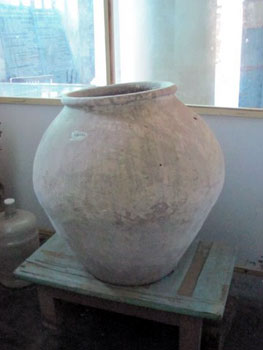 The Durbar Hall also houses antiques that bring to light the strange customs and practices that were in vogue during the reign of the Sethupathy Kings. I was fascinated by a gigantic stone ball that weighed a ton and a massive mud pot. The purpose of the stone ball was to test the strength of a prospective groom in days gone by. Only those young men who could fling the mammoth ball over their shoulders qualified for wedlock. An impossible feat for grooms of today! The mud pot or ‘Mugavai Thali’ on the other hand is a reminder of the gruesome ancient practice of burying the aged alive when care became impossible. I shuddered looking at the harmless mud pot which was actually a coffin from the past!
The Durbar Hall also houses antiques that bring to light the strange customs and practices that were in vogue during the reign of the Sethupathy Kings. I was fascinated by a gigantic stone ball that weighed a ton and a massive mud pot. The purpose of the stone ball was to test the strength of a prospective groom in days gone by. Only those young men who could fling the mammoth ball over their shoulders qualified for wedlock. An impossible feat for grooms of today! The mud pot or ‘Mugavai Thali’ on the other hand is a reminder of the gruesome ancient practice of burying the aged alive when care became impossible. I shuddered looking at the harmless mud pot which was actually a coffin from the past! The Sethupathy Kings are renowned for their religious fervor and this can easily be seen from the mural depictions and the prominence to deities just beyond the Durbar Hall. The walls of the sanctum here mostly talk about Hindu scriptures and the King’s zeal in adhering to them. Though serene in its settings, this hall holds a secret that can easily escape the naked eye. Hidden behind the deities is a secret escape route that was elaborately constructed to lead into seven South Indian temples. Though the tunnel tingled a sense of adventure and evoked my curiosity to look in, this was impossible as much of the passage had caved in.
The Sethupathy Kings are renowned for their religious fervor and this can easily be seen from the mural depictions and the prominence to deities just beyond the Durbar Hall. The walls of the sanctum here mostly talk about Hindu scriptures and the King’s zeal in adhering to them. Though serene in its settings, this hall holds a secret that can easily escape the naked eye. Hidden behind the deities is a secret escape route that was elaborately constructed to lead into seven South Indian temples. Though the tunnel tingled a sense of adventure and evoked my curiosity to look in, this was impossible as much of the passage had caved in.